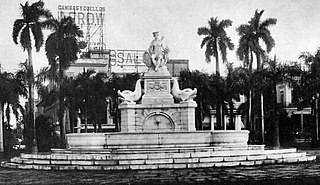Giuseppe Sartorio (Boccioleto Valsesia, Province of Vercelli, 1854 – Mar Tirreno, September 20, 1922) was an Italian sculptor.
Contents



Giuseppe Sartorio (Boccioleto Valsesia, Province of Vercelli, 1854 – Mar Tirreno, September 20, 1922) was an Italian sculptor.



He was born to a family of initially limited means, but his mother's family had enriched themselves trading in precious stones, and his father had been an able vintner. As a boy, Sartorio was apprenticed in Varallo Pombia with engraving sculptor Giuseppe Antonini. Later he continued his studies in the Albertina Academy in Turin under Odoardo Tabacchi. He won a stipend from the Collegio Caccia of Novara, and moved to Rome to attend the Academy of St. Luke, where he won many prizes, including his first, for a funerary shrine for the family Onnis-Devoto in Cemetery of Bonaria in Cagliari.
This work led to further work creating funerary monuments in Sardinia. He had two workshops, one in Cagliari, and a second one in Sassari. Not only performs funerary monuments but also completes: the statues of Saints Peter and Paul for the church of Cuglieri, the war memorial for Italian Independence in Cagliari, the Monument to Vittorio Emanuele II in Sassari, the statues of the three local benefactors of the parish church of Ittireddu, and others throughout Sardinia.
He was resident in Turin. He has completed busts in terra cotta and stucco. Among these Indovina? (Guess?) in 1881 at Milan. In 1884 at the Exhibition of Fine Arts in Turin, he displayed a marble group portrait, commissioned by signora Rosa Masarelli; Odalisque , and a stucco Study of Expression. [1]
In 1897, he opened a studio in Rome, but soon moved back to Piedmont, as well as opening studios with assistants in Cagliari and Sassari. Among his church commissions were the statues of St Peter and Paul for Cuglieri, the Monument to the Fallen in the Wars of Independence in Cagliari; and a Monument to Vittorio Emanuele II in piazza Italia of Sassari, and three large statues of benefactors of a parish church of Ittireddu. Of the 235 monuments erected in the Cemetery of Iglesias, 65 are signed by Giuseppe Sartorio, and at least five others, are attributed to his workshop. The monuments in this cemetery include the monument to Zaira Deplano, a six-year-old, and a Monument to two sisters Luigina e Maddalena. [2]
Sartorio disappeared mysteriously in September 1922 during an ocean passage on the steamer "Tocra" traveling from Newfoundland to Civitavecchia. He was never found, and hi ultimate fate is unknown. [3]

Ettore Ximenes was an Italian sculptor.

Cagliari is an Italian municipality and the capital of the island of Sardinia, an autonomous region of Italy. Cagliari's Sardinian name Casteddu means castle. It has about 155,000 inhabitants, while its metropolitan city has more than 431,000 inhabitants. According to Eurostat, the population of the Functional urban area, the commuting zone of Cagliari, rises to 476,975. Cagliari is the 26th largest city in Italy and the largest city on the island of Sardinia.

Sassari is an Italian city and the second-largest of Sardinia in terms of population with 127,525 inhabitants, and a Functional Urban Area of about 260,000 inhabitants. One of the oldest cities on the island, it contains a considerable collection of art.

Victor Emmanuel II was King of Sardinia from 1849 until 17 March 1861, when he assumed the title of King of Italy and became the first king of a united Italy since the 6th century, a title he held until his death in 1878. Borrowing from the old Latin title Pater Patriae of the Roman emperors, the Italians gave him the epithet of Father of the Fatherland.

Giulio Monteverde was an Italian naturalist sculptor and teacher.

Ignazio Collino (1724–1793) was an Italian sculptor, active in the late-Baroque period, mainly in the region of the Piedmont.

Vincenzo Vela was a Swiss-Italian sculptor, active mainly in northern Italy.

Leonardo Bistolfi was an Italian sculptor and an important exponent of Italian Symbolism.

Giovanni Spano, also a priest and a linguist, is considered one of the first archaeologists to study the Mediterranean island of Sardinia.

The Monumental Cemetery of Bonaria is located in Cagliari, Sardinia. In use between 1829 and 1968, this monumental cemetery originally occupied an area at the base of the hill of Bonaria, and over time expanded upwards. The main entrance is located in Piazza Cimitero, with a second entrance in Ravenna, at the Basilica of Bonaria. Several famous people were buried in Bonaria, including the canonical archaeologist Giovanni Spano, the tenor Piero Schiavazzi and General Carlo Sanna.

The church of Gran Madre di Dio is a Neoclassic-style church located on the western bank of the Po River, facing the Ponte Vittorio Emanuele I leading into Piazza Vittorio Veneto, Turin, region of Piedmont, Italy.

Ferdinando Bonsignore was an Italian architect and designer.

The subject of this article is different to sculptor Giuseppe Gagini of Palermo, Sicily, who died in 1610
Salvino Salvini was an Italian sculptor.

Dante Sodini was an Italian sculptor, mainly of religious subjects and funereal monuments.
Augusto Passaglia was an Italian sculptor.
Salvatore Pisani was an Italian sculptor.
Antonio Tortone was an Italian sculptor.

The Equestrian monument to Vittorio Emanuele II is an equestrian statue of the former King Vittorio Emanuele II, located in the Piazza Vittorio Veneto, a small green spot at the east end of the Parco delle Cascine, located along the Arno River, just west of central Florence, region of Tuscany, Italy.

Emilio Santarelli was an Italian sculptor active mainly in Florence.
{{cite web}}: CS1 maint: archived copy as title (link)| Wikimedia Commons has media related to Giuseppe Sartorio (sculptor) . |